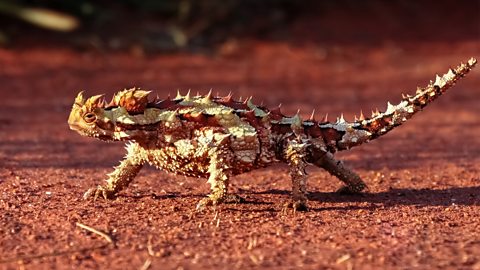Natural selection
Living organisms are adapted to their environments in order to survive.

Image caption, Thorny devil
The thorny devil is a lizard native to the Australian Outback. In between its scales are microscopic channels that catch and carry water. By opening and closing their mouth, they drink through their scales like sipping through a series of straws.
Image caption, Fennec fox
A fox in the desert? You better believe it. The fennec fox has huge, bat-like ears to pinpoint their prey, even when buried under the shifting sands. Their ears are also lined with blood vessels which help regulate and cool the fennecâs body temperature in the hot Sahara sun.
Image caption, Cuttlefish
The master of disguise. The cuttlefish can change the colour and texture of their skin, disguising themselves as clumps of floating seaweed as they stalk their prey or hide from predators.
Image caption, Bluefin tuna
No doubt you've eaten one at some point, but did you know that the Atlantic Bluefin Tuna has an internal heating sytem? A special blood vessel structure allows them to maintain a body temperature that is higher than the cold surrounding water.
1 of 4
Competition makes these adaptations for survival very important. Only the best adapted will survive.
The theory of natural selection â Charles Darwin
- There is variation among the phenotypeThe visible characteristics of an organism which occur as a result of its genes. of individuals in a population.
- Competition (for food, mates etc) causes a struggle for existence.
- The best-adapted individuals survive and the less well-adapted individuals do not survive â this is differential survival.
- The surviving phenotype (the fittest) is able to reproduce.
- The surviving phenotype passes itâs beneficial gene to the next generation.